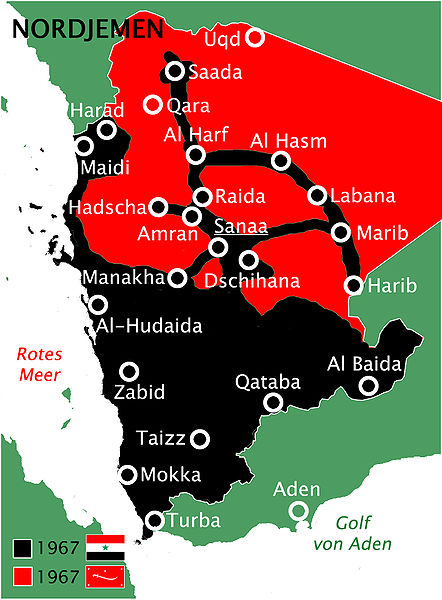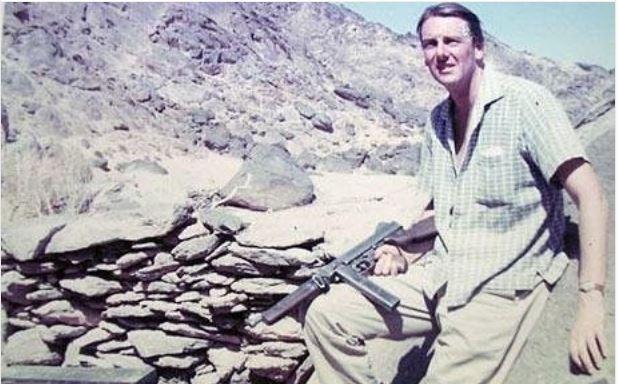What happens if you put a Yemeni tribal fighter, an Egyptian soldier, a European mercenary, a Saudi prince, a Jordanian king, and an Israeli politician together? A war teeming with geopolitics, controversy, war crimes, covert ops, and sheer adventure.
The North Yemen Civil War (1962-1970), fought between an Egyptian-backed puppet government and a royalist tribal coalition, occurred because Gamal Abdel Nasser, Egypt’s then-president, fancied an empire.
Nasser saw that barren, medieval country as the first beam to his grand Arab armada: North Yemen, then Aden, then Saudi Arabia, and finally Israel — or, at least, so went the dream.
Opposing him? An indolent Imam leading a few scattered royalist tribes and a handful of ex-SAS and European mercenaries funded and supplied by the most unlikely partners: Arabs and Jews.
How these forces coalesced would surprise even the most creative storyteller.
Encouraged by his Suez success over the Anglo-French, in 1956, and bolstered by an unnatural fusion of U.S. and Soviet support, Nasser instigated a coup in North Yemen in September 1962.
The Imam soon fled to the mountains.
Almost immediately, after a puppet government was in place, plane-loads of Egyptian soldiers poured into the country to “secure” the revolution. They would continue to do so until the war’s end, at times reaching over 80,000 men, one-third of the Egyptian army’s strength.
With the Republic in place, revolutionary influence and weapons began to trickle south to Aden, still an important British colony and the third-largest port in the world.

Were British interests in the region to be shielded against the communist and Arab-nationalist onslaught, action was needed. But British politicians were in disarray: the Foreign Office wished to recognize the new Republic to please the U.S., but the Colonial Office didn’t (compounding to the mess was the Foreign Secretary’s disagreement with his ministry).
Billy McLean, a conservative MP and decorated WWII Special Operations Executive (SOE) veteran, seized the chance. In October 1962, a month after the coup, he reconnoitered the country on his own and made an alarming assessment: Egyptian forces, exploiting their wealth of Soviet equipment, were crushing the royalist tribes. Rumors of expended poison gas canisters circulated in the royalist mountain hideouts. Soon there would be no opposition left.
But with a non-existent political consensus back in Britain, scant could be done.
McLean objected.
He went to White’s, his London gentlemen’s club. There, he found Col. David Stirling, founder of the SAS. Stirling referred him to Lt. Col. Jim Johnson, former Commanding Officer of 21 SAS (Territorial) turned insurance underwriter at Lloyd’s.
Jim was a solid, patriotic chap — he’d sort this mess out.
McLean paid him a visit. Would he terribly mind forming a covert private army to aid royalist tribal fighters in Yemen?
“Well,” Johnson responded, “I’ve nothing particularly to do in the next few days. I might have a go.”
The resulting four-year operation (1963-1967) could be easily sold as fiction. From his London basement, Johnson ran an elaborate mercenary organization. With his trusted second-in-command, Tony Boyle, an ex-RAF pilot, he recruited SAS soldiers (most former but a few active-duty troopers “on leave”) and European veterans of many a war. He traveled all over the Middle East, often carrying luggage stuffed with guns and explosives (let’s just say that back then airport security was a bit laxer). He secured Saudi and Jordanian funds. He arranged with Mossad for weapon airdrops without telling the Yemenis or his Arab financiers about it. And he coordinated with MI-6 and the highest echelons of government (including successive British Prime Ministers). He grew so effective that Nasser, through his intelligence service, even tried to bribe him to stop. Johnson nonchalantly, made him a counteroffer!
In Yemen, his mercenaries, led by the indefatigable Lt. Col Johnny Cooper, a SAS original, became the occupying Egyptians’ menace. They healed, trained, paid, and advised the tribes fighting for the Imam. They established a radio network, vital to the royalist cause, and evaded assassins with equal grit and ingenuity.
The result?
“My Vietnam,” according to Nasser.
What happens if you put a Yemeni tribal fighter, an Egyptian soldier, a European mercenary, a Saudi prince, a Jordanian king, and an Israeli politician together?
Adventure and intrigue — that’s what happens.
Stay tuned for part 2.










COMMENTS
You must become a subscriber or login to view or post comments on this article.